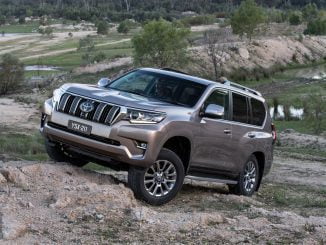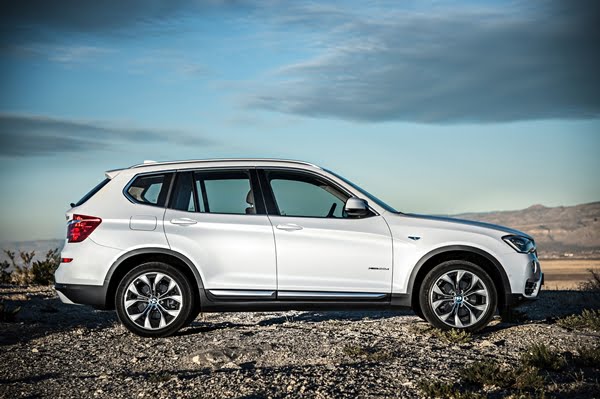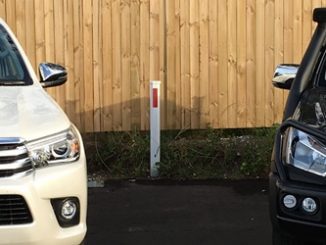
Toyota has upgraded its perennially popular Hilux Dual Cab range and I have just returned from a drive program through the State Forests around Nundle and Tamworth to check out the improvements. With a long history in Australia the Hilux has now sold over 800,000 units since it was first introduced in 1971.
Currently it is the third highest selling vehicle after the Mazda 3 and Toyota Corolla. That says something. HiLux has been Australia’s leading commercial vehicle for the past 16 years in a row and the top-selling four-wheel drive vehicle for the past nine. In recent years with the influx of vastly improved Dual Cab Utes such as the Mazda BT50, Holden Colorado, Isuzu D Max and Ford Ranger, the Hilux , being in the middle of its model life cycle, has found itself falling behind. The private sales results has reflected this.
Hence the model upgrade and extra features. Let’s have a look at those and what they mean for the iconic Hilux. It’s important to note that the upgrades are to the Dual Cab range only, and that is the most popular segment.
Before I delve into the technical stuff it would be remiss of me to write this review in isolation of the context in which we participated in the drive.
We went to the Tamworth Country Music Festival during which we wandered into the back blocks of the Nundle State forests.
Many corporations both large and small talk about Corporate Social responsibility. Some give it lip service, many participate to varying degrees, but few if any compare to Toyota.
They don’t talk much publicly about corporate responsibility, they just get on and do it. It would be easy to down play or under estimate the role Toyota plays in rural Australia. Yes there is a degree of self serving as they sell an awful lot of cars there, but the level of support they provide goes way beyond any marketing strategy with measurable results.
It appears to be deep within the culture that they are part of the very fabric of Australian Rural community. The feeling is reciprocated, the Australian bush loves Toyota and to be honest the Tamworth Country Music Festival just wouldn’t be the same without them as well.
Toyota now offers customers 11 Double Cabs in an extensive range that spans 22 variants across the entire range. Note that all 4×4 HiLux variants now attract the maximum five-star ANCAP safety rating.
Cosmetic internal improvements include new display, audio systems and fresh interior colours and materials.
Across the range the centre stack display audios feature a 6.1-inch screen, auxiliary and USB inputs##, iPod®@ and Bluetooth®^ connectivity, plus audio control switches on the steering wheel hub.
The top of the line SR5 variants have a reversing camera and a satellite navigation system with SUNA™ Live Traffic# updates as standard – all viewed on the display audio screen. My view is that ALL vehicles (including sedans etc) should have reverse cameras for safety and it should be mandatory for a 5 Star ANCAP rating.
The reverse camera provides great visibility however has no guide lines to assist. Other than the obvious safety aspect, reverse cameras are a useful feature when 4wdriving as they allow the driver to see what is behind if you need to turn around on a tight trail for example. They are also invaluable when hitching up a camper trailer or boat etc. The camera is mounted high on the tailgate which would assist in preventing it becoming dirty when off road but appears to look slightly vulnerable.
The five-star safety rating for 4×4 HiLux is achieved with enhancements including the standard fitment of front passenger seat-belt reminder , three-point seatbelt for the centre-rear seating position, stability and traction control, brake assist and electronic brakeforce distribution. Stability control was previously a $1,500 option on the 4×4 mid-range SR grade.
Safety features include ABS, EBD, BA, TRC, VSC, and a heap of air bags for the front driver and passenger, side curtain and side airbags. I can attest to the benefit of having traction control as on the drive we rounded a corner only to be confronted by a vehicle coming the other way on our side of the road. If not for the traction control I suspect I would have been extracting the Hilux from the trees that lined he road. We weren’t going fast either.
Inside the driver’s seat is electrically adjustable, clad in comfortable leather (a $1500 option on the 4X4 SR5 dual cab) and has good lumbar support. In front of the driver is a height adjustable only steering wheel with controls for the multi-information display (MID), telephone and voice recognition.
The MID, viewed on a liquid crystal display above the centre stack, shows current and average fuel economy, average vehicle speed, cruising range, outside temperature, a compass and time. This feature is new to SR, as are the Optitron dials for speed, engine revs and fuel tank/coolant temperature.
Rear seats are comfortable and the seat squab is deeper than many others providing good knee support. As many readers know I am slightly larger than the average bear so I sat in the rear seat for a while to see how comfortable it was and I was pleasantly rewarded. There was plenty of knee, foot, shoulder and head room. Like most utes its better for two but will hold three.
Externally the HiLux 4X4 SR5 Extra Cab has upgraded to a 17″ alloy wheel (from the previously ridiculous 15″ alloy). SR 4×4 variants have gained a 225/70 17-inch all-terrain tyre. The 17inch wheels and tyre combination makes an improvement to the overall handling and dynamics.
The full HiLux range retains its three body styles, three equipment levels, three engines and three transmissions driving either the rear or all four wheels.
The variants I drove were the 4X4 Dual Cab SR and SR5 in both the 5 Speed manual and 5 Speed Auto with the common rail diesel. This engine is the most popular in the range and produces 126Kw of power @ 3,600rpm and torque of 343Nm @ 1,400rpm. The diesel is frugal and sips fuel at a rate of 8.7l/100km.
These power and torque figures are a little low when compared to the latest competitors. However figures don’t always tell the whole story. It is true that the Hilux feels underpowered when driven side by side with say a Holden Colorado, but in isolation it produces a smooth power delivery and the new transmissions extract the most from the engine.
There is an alternative 175kW/376Nm V6 petrol engine however the diesel is far and away the better engine. Towing capacity is 2500Kg with a tow ball rating of 250Kg
The 5 speed auto transmission is a dog leg style, unfortunately there is no Tiptronic however it works well enough, especially off road.
Our drive program included plenty of sealed road work and the ride was smooth with little road noise from the tyres. On dirt the Hilux was very assured with the 17inch tyres combination smoothing out many of the rough edges.
On the rougher sections the Hilux handled low range crawling with the best of them. It’s here that the long heritage shows its class. Off road the Hilux 4X4 matches the best of its competitors.
Price changes with the expanded feature list are limited to between 1.2 and just under 3.0 per cent. The entry price for the HiLux range remains from $18,990+, with 4×2 Double Cabs now priced from $27,490+ and 4×4 Double Cabs from $40,990+. Prices are MLP and don’t include extras Every new HiLux is covered by the capped-price Toyota Service Advantage at a maximum of $170 per service^^.
The Toyota 4×4 Dual Cab Hilux is in the middle to later part of its model life cycle and as such these improvements, while welcomed and substantial still have the Hilux slightly behind the big four Dual Cabs in features, power and performance and towing ability. Off road it is the equal of all of them and better than many.
However the Toyota Hilux 4X4 Dual Cab Ute remains a robust, highly competent, smooth riding and popular 4X4 Dual Cab. That is obvious by the fact that it outsells every other Ute on the market and most cars as well.

















